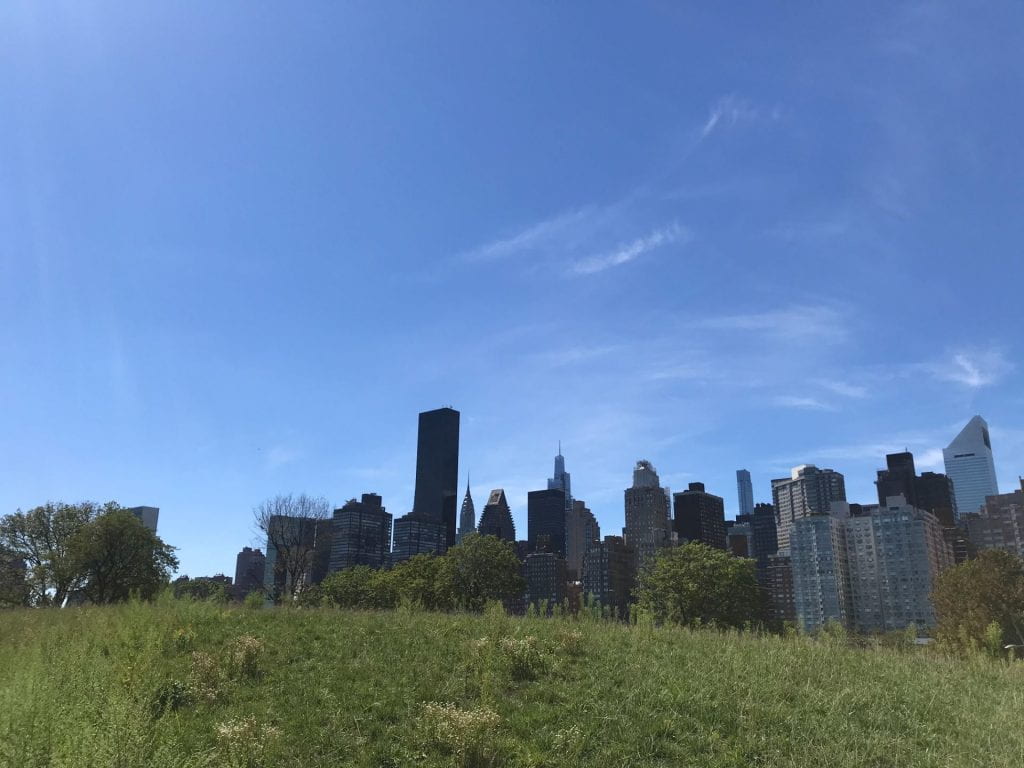
Arriving at Roosevelt Island was cumbersome and convoluted. I had no idea you had to go through Queens, I assumed you could drive across the 59th Street bridge, take an exit, and pull up to the campus in three straightforward steps. Easy. I guess it was a humbling experience to discover that arriving by car to Roosevelt Island is the least convenient mode and takes you on a journey through industrial parks and ship yards before shooting you over a small drawbridge culminating in a tight spiral ramp, before finally landing you and your car on the north end of the island. Once there, I immediately felt like I was in some sort of urban limbo, halfway between two boroughs, in a place that reminded me a lot of a public housing project you’d find in Scandinavia. It was almost utopian, with stop signs at every intersection, playgrounds on every block, one street called Main Street. There were children on scooters and parents running after them, kids playing soccer after school. It was like driving through a Dr. Seuss neighborhood to get to Cornell’s Tech campus all the way at the tip of the island.
Upon arriving at The House at Cornell Tech, I was met by the friendliest doormen who genuinely want to help you. I’ve never had nicer doormen; come to think of it, I’ve only lived in one other building that had them, and these doormen are definitely friendlier. Bob Balder said that they have a soft spot for AAP students, apparently we’re more personable than some of the other residents, and I like to believe that; although, I’ve had some really pleasant run-ins in the elevator with Tech people, socially-distanced of course. One time, I met a man on the sixth floor who lives alone with his dog. Another time, I met a young mother with the cutest child I’d seen in a while. The campus is truly teaming with life, which surprised me. The public spaces, of which there are a couple, are heavily utilized. At all hours of the day there are sunbathers, students with their heads in books, kids doing cartwheels on the grassy parts, groups of friends grabbing a bite at the café. The campus is a paragon of city planning and landscape design, I believe it was the same architects as the guys who designed Gates Hall at Cornell’s Ithaca campus. It might have also been Weiss/Manfredi.
My favorite thing to do on the island is to walk to Starbucks, which is right by the train station. To get there, I walk along the river, which, in the mornings, is the thing that gets me out of bed. It’s such a simple routine that has come to mean so much to me and my life here. Of course, I love taking the tram, I would be doing this blog a disservice if I didn’t mention it. It’s so iconic, and honestly hard to believe that it exists in a city such as New York. I thought trams and funiculars were vestiges of the past; it’s heartening to see that New York has preserved such an elegant piece of its infrastructure. Looking at the city from the banks of Roosevelt Island, I feel like a fly on the wall, an objective bystander observing the city as if it were a diorama. If you wanted to, you could choose a car driving along FDR and follow its journey with your eyes from the tippity top of the east side almost to the bottom, which feels like some sort of privilege.
Being here during this time is admittedly not ideal, with COVID, my options for socializing are quite limited for obvious reasons, so the island can feel remote. But I ultimately appreciate my little oasis from the concrete jungle. It is probably the safest part of the city to be in right now, and my head-on view of the 59th Street bridge, especially at night, somehow makes life here really sweet.

